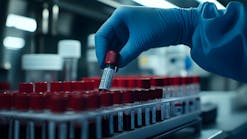As all close observers of the diagnostics space recognize, genetic sequencing will have a huge impact on the field across multiple disease areas. During the recent 16th International HLA and Immunogenetics Workshop in Liverpool (May 28—30, 2012, presented by the European Federation for Immunogenetics), much discussion centered on sequencing. Repeatedly, participants commented that sequencing is “the way the field needs to go.” And sequencing—particularly rapid, economical next generation sequencing—is also making inroads into clinical research in conditions including infectious and inherited diseases, neurological disorders, and cancer.
In the transplant arena, sequencing can satisfy the need for high levels of resolution and accuracy, as well as open doors to investigating medical questions about tolerance, which is not well understood.
Organ and bone marrow matching prior to transplant is typically done by analysis of from four to six genes (A, B, C, DR, DQ, and DP) that encode human leukocyte antigens, or HLAs. These antigens are found on the surfaces of all cells in the body, and individuals vary widely in their constellation of HLA sub-types. The antigens are critical mediators of immune response; detection of foreign HLAs by the immune system can trigger a vigorous response. Tissue typing by HLA analysis is therefore essential to reduce the possibility of transplant rejection or the risk of graft-versus-host disease (GVHD).
Different typing labs differ in their diagnostic assay needs for transplant matching. Hospital labs type a patient, and then transplant cooordinators search for a match among a database of donors. For the hospital lab, high accuracy is the main driver, and those labs currently rely on Sanger sequencing, a method that will most likely remain the gold standard for some time yet. In the laboratories that are typing registry donors, however, making a “first pass” at a match is typically done at a lower level of resolution and in a mass, highly parallel manner that examines many potential donor types.
This category of screening is ideal for next gen sequencing, which has the potential for much higher throughput and lower cost than Sanger sequencing. The newest instruments are also economical to purchase and to run, and the technology continues to develop rapidly. Technologies vary across platforms. Most are optical-based, but semiconductor-based sequencing is proving to scale extremely rapidly. In early 2013, for example, it will be possible to sequence an entire human genome in a matter of hours.
Next generation sequencing does offer significant potential to the clinical transplant lab as well. Ninety-five percent of the population is heterozygous at their HLA loci. This complexity can produce ambiguity in Sanger sequencing results, which cannot always separate all variants at the front end. Any ambiguous results obtained with Sanger sequencing must always be corroborated by an additional method, be it resequencing or an alternative. Next gen sequencing has the potential to get to the answer in one test by providing nucleotide-specific reads across the entire region of interest and resolving phasing issues.
Next gen sequencing will also open the door to investigating issues of tolerance in transplantation. The best theoretical match is not always tolerated, and we don’t currently understand why some mismatches are well tolerated and others are not. This is an important problem to understand, as GVHD is typically very severe. (Rates of GVHD vary from between 30% and 40% among related donors and recipients to 60% and 80% between unrelated donors and recipients, according to the National Institutes of Health’s Medline Plus; see www.nlm.nih.gov/medlineplus/ency/article/001309.htm. The amount of data generated by next gen sequencing will make it possible to undertake large scale studies to address this issue. Some matches may be tolerated in specific genetic backgrounds and not others, due to compensatory polymorphisms. Also, today only the exons (the coding material) of genes are sequenced during typing, but the speed and economy of next gen sequencing will make it feasible to sequence the introns as well and examine the potential contribution these sequences make to tolerance.
Since the amount of information obtained through next gen sequencing will significantly expand our HLA databases, new data management systems will be needed. How the data is stored, accessed, and utilized will all need to be addressed. Turnaround time will remain key, particularly for organ donations. To date, sample preparation for next gen sequencing has been problematic, but newer and faster options are coming online.
In addition to transplant diagnostics, next gen sequencing is becoming incorporated into other domains of the clinical lab. Results presented at the San Antonio Breast Cancer Symposium in December 2011 detailed how whole genome sequencing identified heretofore unrecognized mutations in triple negative breast cancers and was taken into consideration when selecting new drug agents for several patients. Baylor College of Medicine and Fox Chase Cancer Center have begun to incorporate sequencing of tumor and normal tissue into their cancer care programs. Recently, the Hospital for Sick Children in Toronto and Boston Children’s Hospital announced plans to develop next gen sequencing workflows for research on pediatric diseases. In all cases, the promise of next-generation sequencing provides improvements in some aspect of breadth of coverage, specificity, cost, workflow, or throughput that ultimately will enable better patient outcomes.
Todd Laird is Vice President and General Manager of Transplant Diagnostics for California-based Life Technologies.
Inta Veldre is a Senior Product Manager for Life Technologies.
Victoria Toner is a Marketing Manager with the company, which is a developer and producer of
next generation sequencing platforms including the Ion Personal Genome Machine (PGM™) and Ion Proton™. The PGM and Proton are Research Use only; not intended for Diagnostic Use.





